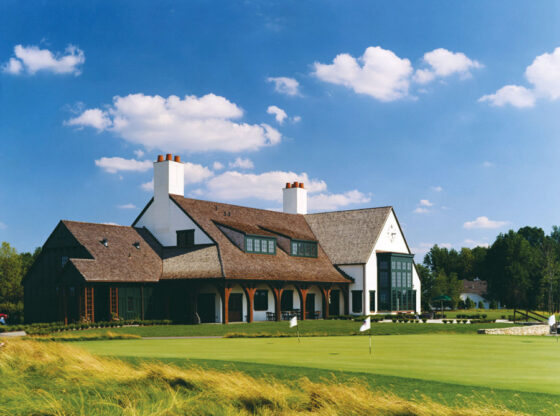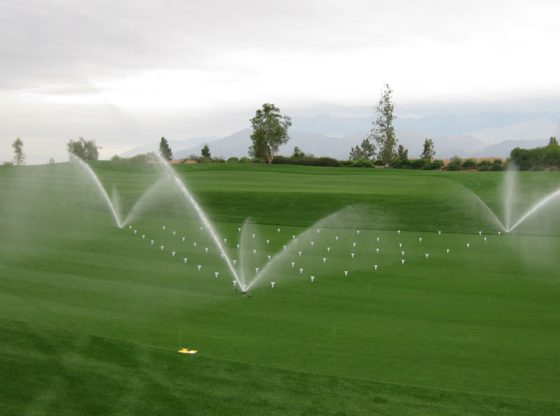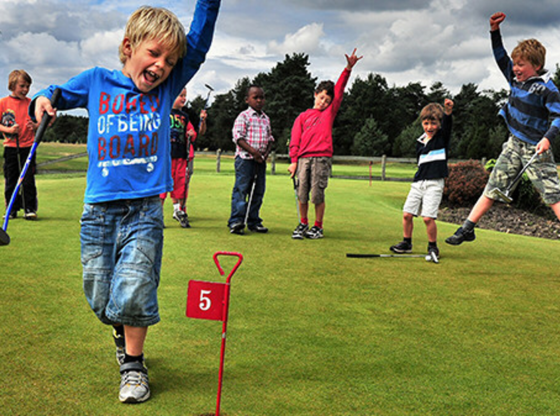As the game of golf evolves, so does the job of a golf course superintendent. Golf courses are just getting a handle on making money again after adapting to the over-built realities of the 2000s and the recession of 2008. Now our industry must adapt to actual changes in the game.
So what are golf courses faced with? A primary need for every golf course is to attract more business, or more accurately, more revenue. How to gain additional usage, more golfers, and more members is the hard part.
Entrepreneurship has entered the picture. New twists to traditional golf, attracting new types of golfers, and even inventing new games are being experimented with worldwide. Here’s some of what is happening;
Education
A factor that discourages new golfers from playing more or continuing to play at all is the inherent difficulty of playing golf. Progressive courses and even outside businesses are offering beginner’s classes.
In some European countries they have a registration and certification program all golfers must sign up for. Maybe too much to expect Americans to register with the government and show a degree of knowledge and skill to play golf! However, golfer ranks are growing fast in Europe.
One claim is that the Olympics cause governments through schools and associations, to push new golfer development so their country can field an Olympic team. Education helps people know “how” to play the game so they can be polite and keep the game moving. Some countries even have tests to get a golf “license”!
The Olympics may be a huge new golfer driver for us too.
Youth Programs
The PGA Junior League and First Tee are seeing excellent growth. Such programs are getting young people interested and involved. Courses must keep them active once they move out of youth programs.
Lucy Li qualified for the U.S. Women’s Open recently. She was the Drive, Chip, and Putt champion for the 10-11 year old girl’s division the first year the DCP competition was offered.
Scoring
Non-traditional golf game scoring has apparently handled some issues in attracting and keeping new golfers. Different variations are being experimented with. European countries with growing golfer ranks, they use a handicap system. Golfers have to post their scores to maintain their handicap.
The Stableford or Points scoring system is also working to help speed up the game for lower skill players. As I understand it, once a player reaches net double bogey on a hole, they pick up and move to the next hole. Keeps the game moving without embarrassment, since most players will have to pick up during a round.
Also simplifies and equalizes scoring and forms the basis for the handicap system. Players don’t talk about their score they shot in a round, they talk about the points they gained.
Golf Course Atmosphere
Women feel intimidated by the atmosphere on many courses. Providing education and using alternative scoring systems seems to help. Females make up about 20% of golfers in the U.S. but about 40% in most European countries.
Europe is where education and scoring have been changed and it must be working. Not only are they gaining more female golfers, but also reaching the younger folks too.
Education helps women feel more at ease because they understand how to play the game and its etiquette. Thus they understand how to keep it moving so as not to upset the high skill fast players. Women players with lower skills don’t want to be considered hindrances by the “good golfers”.
Another advantage with the Stableford scoring method is all players play from the same tees. Women like the idea they are not segregated to the “women’s tees” and their scores are not considered equal because of it.
Fees
Sometimes a player just has time for 4 holes, so why can’t he pay a 4-hole rate? Well, some courses offer just that. Maybe a player has 90 minutes and wants play as many holes as can fit in. Why not charge him for 90 minutes of play?
Perhaps there is a package for 20 minutes on the driving range and 3 holes on the course. Most courses have a 9-hole fee already. Might not be as difficult as many think to offer additional fee options.
All of these experiments are proving that players are interested in and want non-traditional game pricing. The definition of what it means to “play golf” is changing.
15 inch Holes
So the game evolves again. To speed up play on the greens, some courses have installed 15 inch diameter holes. Kids and new golfers love it.
OK, we’re borderline revolution here! Before marching on the palace with pitch forks, give a thought. If it brings in players shouldn’t we at least give it a chance?
FootGolf
Now we’re in full blown revolution mode! Picture a 21 inch hole and instead of hitting a little white ball around the golf course, you kick a soccer ball. I know, take a breath . . . .
Courses that have implemented FootGolf say kids, families, and group outings love it. Anybody can play it. The game moves fast. It’s cheap for participants. Why not?
In May of this year, The Legends Golf Club in Franklin, Indiana reported they have more FootGolfer rounds than traditional golf rounds. Currently there are about 150 golf courses offering FootGolf nationwide.
The game of golf is growing. More people are trying golf so it’s in our industry’s best interest to keep the newbies interested and active. Many innovative methods are in trial.
It also means the job of a superintendent is changing too. New holes, maybe only one tee, different play scheduling, etc will alter how we maintain golf courses. Wow, future days will be interesting!












